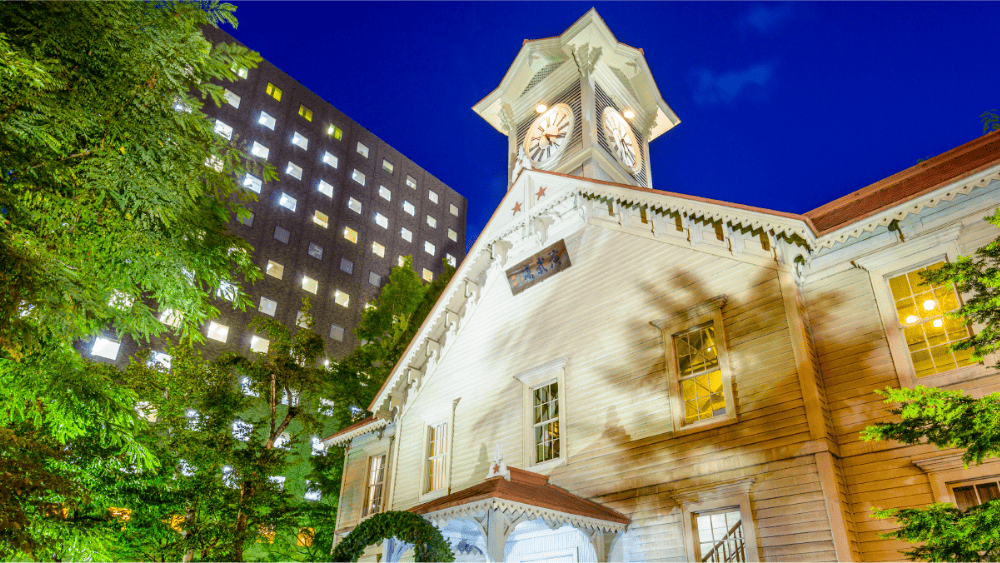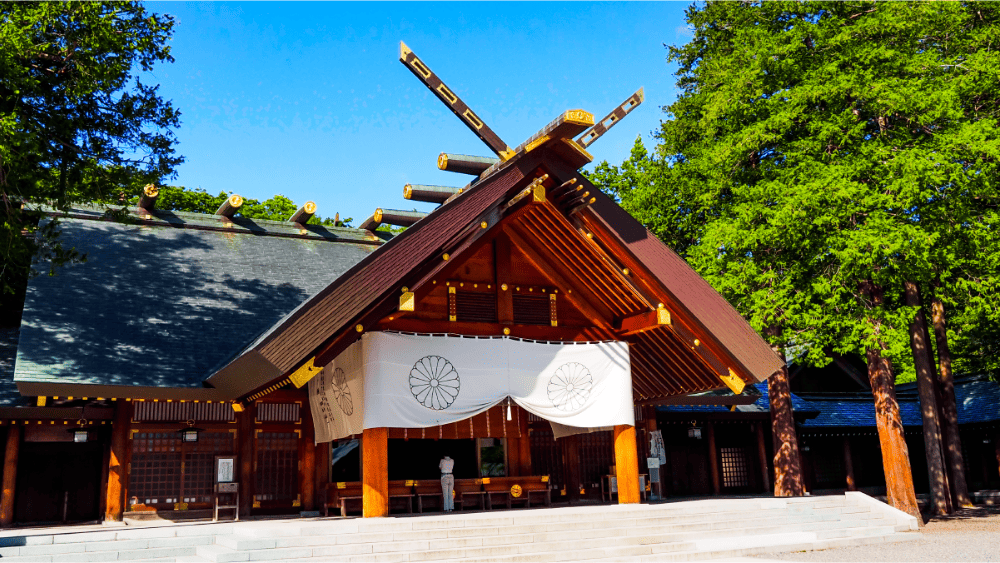
Sapporo, the capital of Hokkaido and Japan’s fifth-largest city, first gained global recognition as the host of the 1972 Winter Olympics.
Today, it attracts millions of visitors every year, especially in winter, for its renowned snowy landscapes and the world-famous Sapporo Snow Festival, a celebration of intricate ice and snow sculptures that draws travelers from around the globe. Beyond its winter wonders, Sapporo is a year-round destination known for its rich culture and iconic experiences. From indulging in juicy hairy crabs, iconic Sapporo beer, and steaming bowls of ramen to exploring museums, scenic parks, and vibrant theatrical events, the city has something for everyone.
Experience Sapporo’s charm across all seasons with Travelodge Hotels Asia. Stay at Travelodge Sapporo Susukino, ideally located to explore these iconic spots in Sapporo with ease.
Sapporo Beer Museum
Did you know that Hokkaido is the birthplace of beer in Japan? Sapporo Beer, one of the country’s oldest and most popular brands, has been brewed in Sapporo since 1877. The Sapporo Beer Museum, the only museum in Japan dedicated to beer, opened its doors in 1987 and offers a fascinating journey through the history of Japanese beer-making. After exploring the exhibits, visitors can indulge in freshly brewed beer shipped directly from the Sapporo Breweries Hokkaido Brewery and the Sapporo Kaitakushi Brewery. Don’t miss the chance to try iconic brews like the widely loved Sapporo Draft Kuro Label, the Hokkaido-exclusive Sapporo Classic, or the historical Kaitakushi Beer.
This iconic spot is a must for beer enthusiasts visiting Sapporo and a perfect addition to your travel itinerary!
Susukino
Looking for entertainment in Hokkaido? Susukino, the largest entertainment district in northern Japan, has it all. This lively neighborhood is packed with nightclubs, restaurants, karaoke spots, and pachinko parlors, making it the ultimate destination for nightlife enthusiasts.
Whether you’re hunting for a hidden speakeasy serving craft beer or looking to hit the latest dance club, Susukino offers endless options. It’s also the best place to experience Japan’s famous nomihodai culture, where you can enjoy “all-you-can-drink” deals at various bars and restaurants. But the excitement doesn’t stop there – Susukino is home to the iconic Ramen Yokocho, a hidden ramen alley tucked into Tanukikoji shopping street. This alley features renowned ramen shops, each specializing in flavors unique to different regions of Japan.
With so much to offer, Susukino is a must-visit destination for food, drinks, and unforgettable nightlife in Hokkaido.
Sapporo Clock Tower
The Sapporo Clock Tower is one of the city’s most recognizable landmarks and its oldest remaining structure. Built in 1878, it originally served as a theatrical hall for the Sapporo Agricultural School, now known as Hokkaido University. The clock tower was the brainchild of Dr. John Clark, the school’s vice principal, who envisioned it as a drill hall for physical education, military training, and ceremonial events. Its design, inspired by the midwestern United States during the frontier era, adds a touch of familiarity for many visitors. Today, the clock tower houses exhibitions, photographs, and displays detailing the history of agriculture in Sapporo.
Over the years, the tower has earned significant recognition. It was designated an Important Cultural Property in 1970 and certified as Mechanical Engineering Heritage in 2019. Visitors can still hear the iconic bell chime every hour, making it a must-see destination for history and culture enthusiasts in Sapporo.
Sapporo TV Tower
No, you won’t be watching TV here, but the Sapporo TV Tower offers much more than broadcasting! Standing 147.2 meters tall, this iconic tower is renowned for its observation deck, where you can enjoy stunning panoramic views of iconic spots in Sapporo, both day and night. Beyond the breathtaking views, the tower features a gourmet food court, an underground shopping street in Aurora Town, and a tourist information center. The observation deck, wrapped in large windows, offers clear vistas and includes telescopes for a closer look at the cityscape.
A highlight of the year is during the Sapporo Snow Festival in February, when the neighboring Odori Park transforms into a magical winter wonderland, making the tower’s observation deck a must-visit spot. Whether for the views, food, or festivities, Sapporo TV Tower is the perfect way to experience iconic spots in Sapporo.
Hokkaido Jingu Shrine
The Hokkaido Jingu Shrine is one of Sapporo’s most revered landmarks, enshrining four deities significant to the region. Initially, three gods – Okunitama, Onamuchi, and Sukunahikona – were chosen to oversee the reclamation of Hokkaido, and later, Emperor Meiji was added as the fourth enshrined deity. Although the shrine was destroyed by fire in 1974, it was beautifully restored by 1978, retaining its spiritual significance.
Visitors are encouraged to respect traditions by avoiding the main path, which serves as the causeway of the Gods, when walking or taking photos. Adjacent to the shrine is the expansive Maruyama Park, a 70-hectare natural haven boasting over 330 plant species, 100 bird species, and even a zoo. Whether you’re seeking tranquility or a connection with nature, a visit to the shrine and its surroundings is an essential experience when exploring iconic spots in Sapporo.
Discover the best of Sapporo with the best offer from Travelodge Hotels Asia at https://www.travelodgehotels.asia/travelodge-sapporo-susukino/
Leave a Reply
You must be logged in to post a comment.





